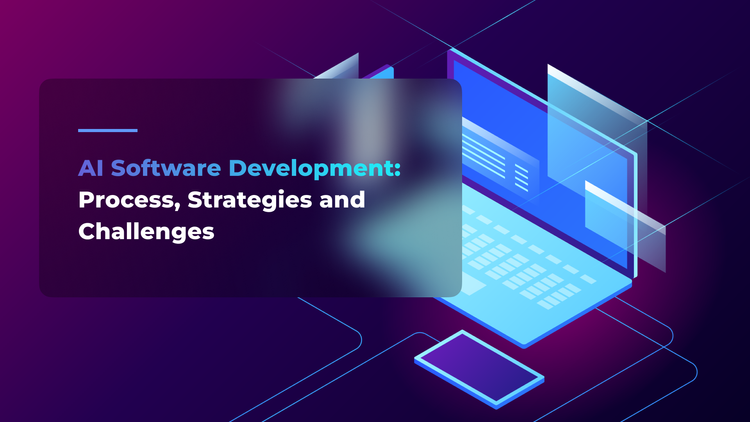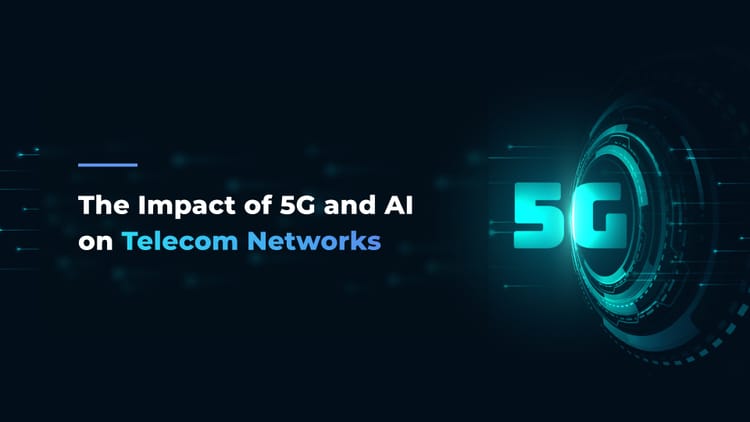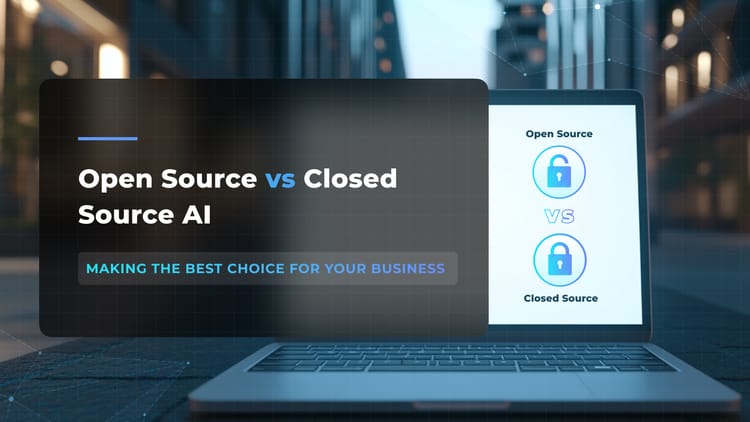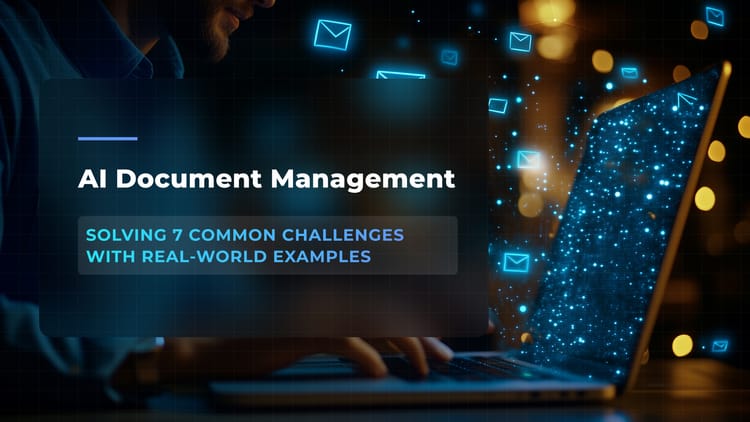AI Project Life Cycle: Key Stages of Product Development Success

In traditional software development, you are probably used to a pretty straightforward process. Plan, code, test, deploy, and you’re done. But this approach is not the same with artificial intelligence. There are extra steps, unique challenges, and a lot more iteration involved. What happens when businesses neglect these differences? They end up with models that work incorrectly, unforeseen expenses and delays.
As a software development company passionate about artificial intelligence and new technologies, we at Flyaps have helped many businesses from various domains to achieve their goals with AI development. Whether it's custom AI solutions or pre-built AI tools for industries like logistics, retail, and recruitment, we've been there, experimenting and creating unique AI-driven solutions. We often rely on various AI development platforms to accelerate prototyping, improve model performance, and streamline deployment. Having acquired a lot of unique knowledge, we would like to share our insights about all stages of the AI lifecycle and give you one real-life example. Keep on reading to learn more!
What makes the artificial intelligence life cycle unique?
Why do artificial intelligence projects need special treatment? Unlike traditional software development, artificial intelligence solutions, especially those powered by generative AI, bring new challenges. Companies must tackle issues they haven't faced before. Let's dive into the specifics of the AI lifecycle.
Data in the AI project life cycle is EVERYTHING
Before starting your AI project, consider the data it needs: the amount, sources, and quality.
For instance, building an artificial intelligence system to predict purchasing behavior based on browsing activity, doesn't require a huge dataset — just the right kind. A small set of data from only customers who made a purchase won't give the system much to learn from. A mix of data from both buyers and prospects lets the system spot patterns and improve predictions. Here, quality matters more than quantity.
In some situations, quantity is more important. For example, training an AI model to recognize handwritten digits for postcode sorting requires a large number of samples to function properly.
Ultimately, it all comes to data — it's the foundation on which artificial intelligence works.
Training AI models takes time
Training an AI model takes time and patience. It's comparable to teaching a child to play the piano. At first, the child is uncertain where to start or how to make sense of the keys. Similarly, when training an AI model, you're providing the basic knowledge it needs to recognize the task. This process is known as prompt engineering, where developers create clear instructions for the model.
Once the child learns the basics — notes, scales, finger positions — it’s all about practice. Similarly, training an AI model involves repeating examples until it improves.
Now that we've covered AI project characteristics, let's dive into the main stages of the AI life cycle.
The key stages of the AI lifecycle management
As artificial intelligence is getting more and more powerful, with the scope of work it can perform expanding every day, the AI project life cycle is becoming more complex as well. Below we will share only the most essential stages no AI project can live without, but their exact number depends on your project needs.

Problem identification
Before choosing artificial intelligence, determine if it's necessary for your situation. While generative AI models are impressive, simpler tools might work just as well.
For instance, if a task can be handled by other automation tools, go with them. They’ll likely be cheaper, faster, and require fewer resources than artificial intelligence.
Let’s say your company processes hundreds of invoices each month and sets up an AI-based system for automation. This system can handle various invoice formats and adapt over time, but it requires heavy computing resources and ongoing maintenance.
Your competitor, however, uses robotic process automation (RPA) for invoice processing. Since their invoices are similar, RPA is more efficient and cost-effective. It requires less maintenance and is quicker to deploy.
So, if your challenge is distinctive and automation tools can’t help, artificial intelligence may be the solution. If the task is simpler, explore alternative options.
AI can do more for your business—let’s find the best way to make it work for you. Check out our expertise and let’s discuss your next AI project.
See out AI servicesData preparation
Data preparation is a long story, filled with many nuances. We will cover the main points here, and if you’re looking to find out how to create a strong data foundation for AI.
Start by determining what data you need and how much. For instance, an airline adding a chatbot to its app to track flight delays and suggest rebooking options will need various data sources. These include historical and real-time flight status, weather forecasts, and customer data like booking history, all while ensuring compliance with data collection and protection regulations.
Once the data is identified, the development team cleans and pre-processes it to improve data quality. It involves removing duplicates, correcting errors, and standardizing formats for consistency. The cleaned data is then merged into one dataset, ready for analysis.
A key tool in this process is the data pipeline, which moves data from various sources (like FlightAware or the airline’s database) to storage, where it can be analyzed and used for artificial intelligence tasks.
You can find more information in our article on how to build a data pipeline fast (for AI and LLM projects).
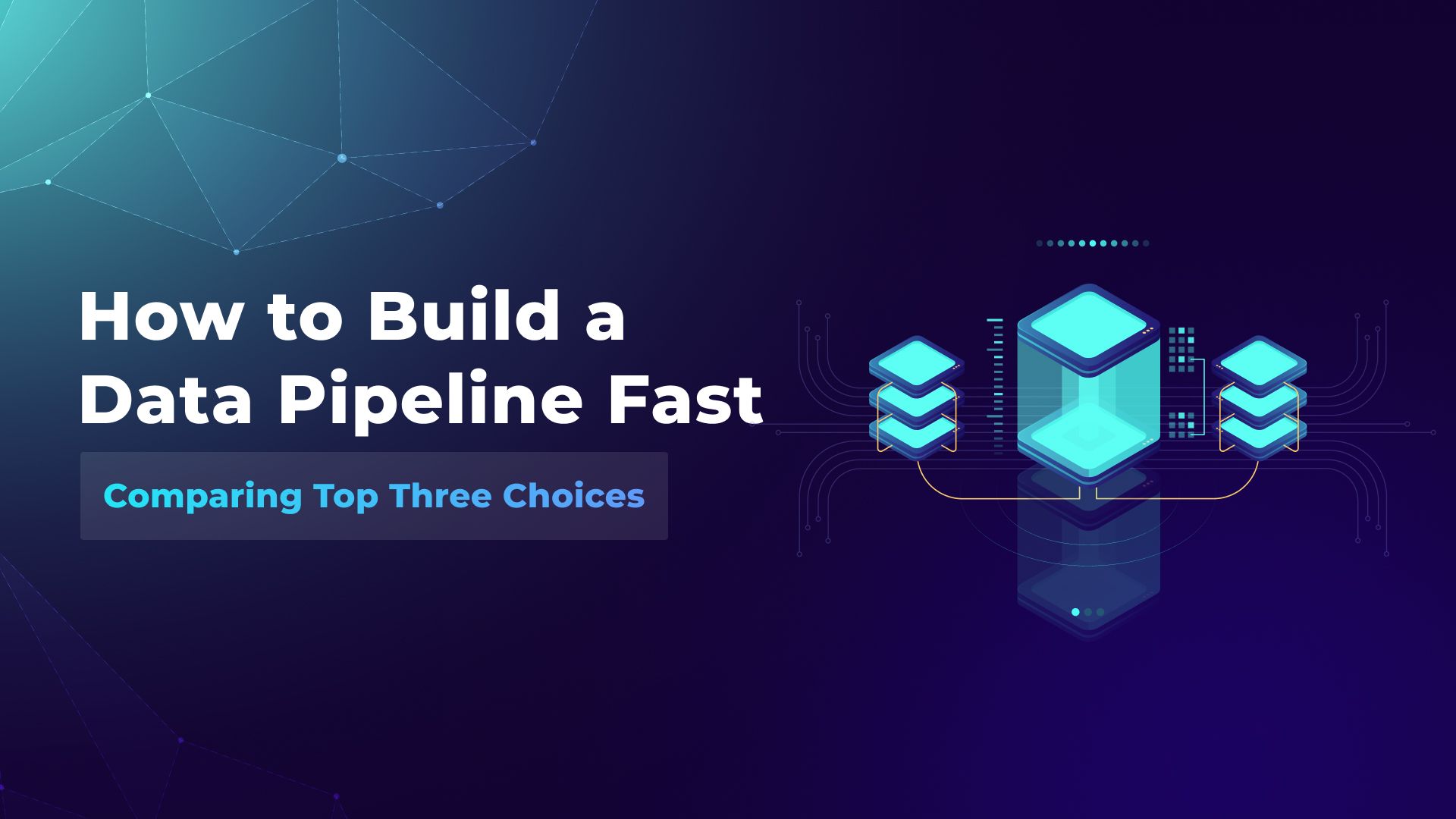
Feature engineering
In an artificial intelligence project, a model might be used to predict things like which products will sell best next month. To achieve this, data engineers adjust the algorithm by selecting the most relevant raw data and determining measurable characteristics, called “features,” to help predict sales accurately. This process, known as feature engineering, ensures the model makes reliable predictions.
For instance, to predict bestselling products, data engineers begin with raw data like past sales, product reviews, and customer demographics. They then create features like average product ratings, purchase patterns, and seasonal trends, transforming the data to ensure consistency and selecting the features that most accurately predict future sales.
Model training
Once the data is ready, the AI model undergoes iterative training. Different machine learning algorithms and datasets are tested to find the best-performing model. For example, a retail company might test some algorithms and neural networks to predict customer churn. The optimal model is then fine-tuned by adjusting parameters such as learning rate, batch size, number of hidden layers, activation functions, and regularization to achieve the best possible results.
Additionally, businesses can use transfer learning to save time and resources. For instance, an e-commerce company could use a pre-trained image recognition model to categorize product images, eliminating the need to train a model from scratch.
Model evaluation
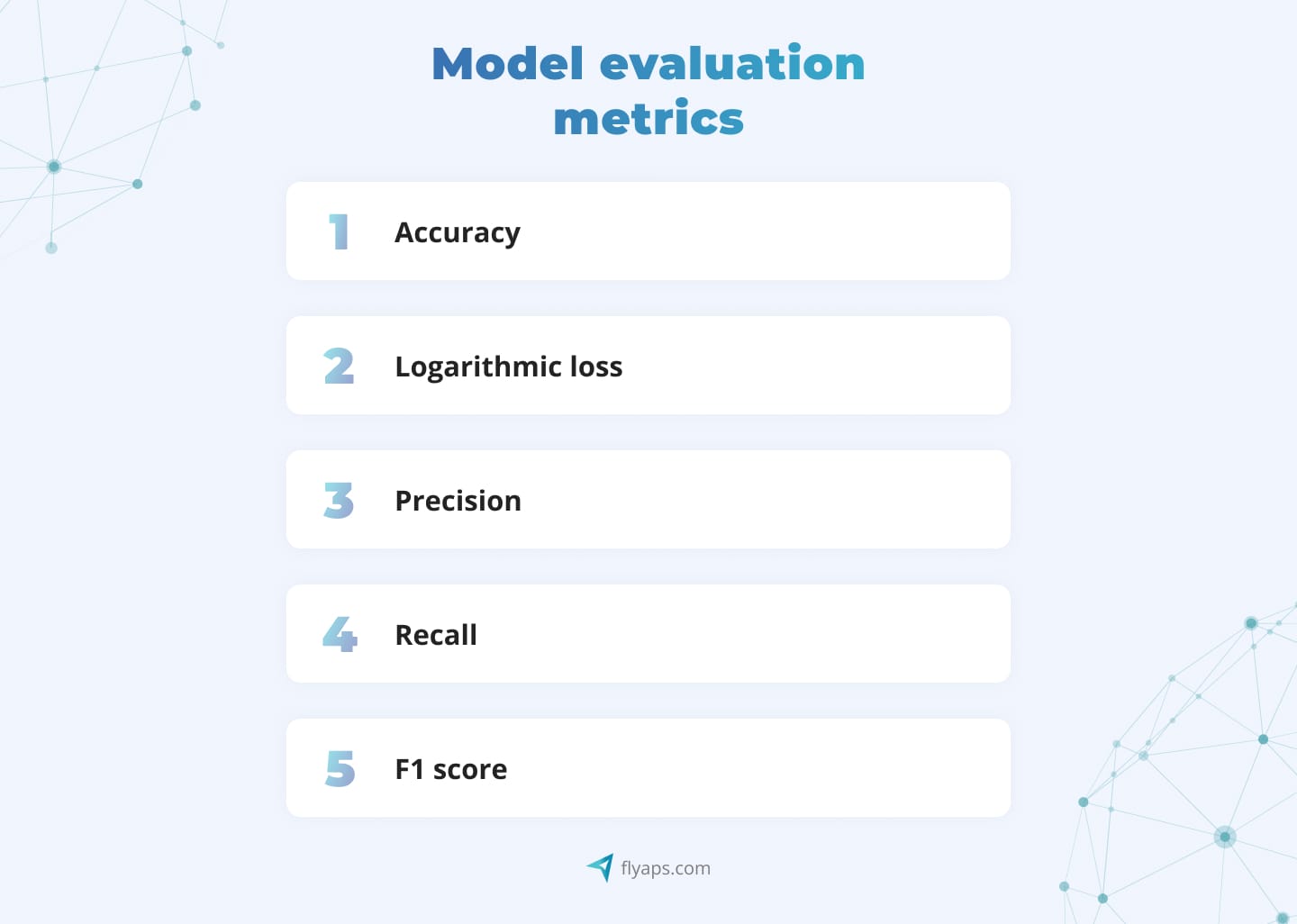
After training, the AI model's performance is evaluated using various metrics:
- Accuracy: the percentage of correct predictions.
- Logarithmic loss: a measure of how far the predictions are from the actual labels.
- Precision: the proportion of how many selected items are relevant.
- Recall: the proportion of how many relevant items are selected.
- F1 score: the accuracy of a test, taking into account a balance between precision and recall.
For instance, a retail company developing a model to predict customer churn would use these metrics to assess how well the model identifies customers who are likely to stop buying from them.
Model deployment
Once the AI model is set up, developers can start using it in a production environment to generate useful outputs. There are a few ways they can do this.
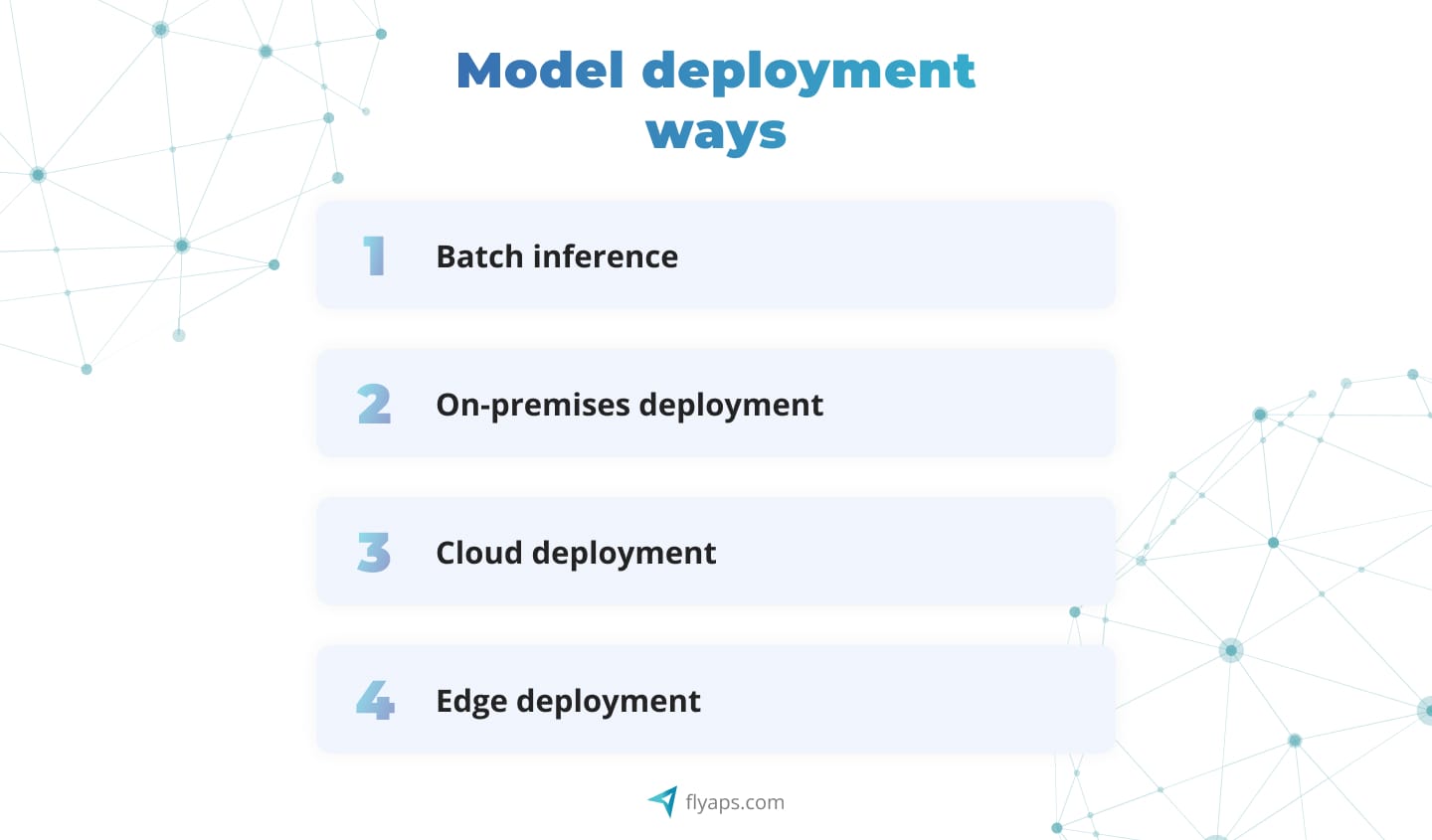
Batch inference
This involves generating predictions on a set schedule. For example, a bank might run credit risk assessments in batches every night.
On-premises deployment
On-premises deployment refers to running AI-driven software on local hardware. For instance, a manufacturing company might use its own infrastructure to deploy a quality control model on its factory floor. The model checks products for defects as they come off the production line.
Cloud deployment
Cloud deployment means using remote servers from providers like AWS or Google Cloud. Instead of running on local hardware, the software runs on remote servers. An online retailer, for instance, might deploy a recommendation system on the cloud. This system suggests products to customers while they shop online, and the cloud setup allows it to handle many users at once.
Edge deployment
This way involves running models on local devices such as smartphones or IoT devices, rather than hardware and remote servers. For example, a smart thermostat could use a model deployed on the device to automatically change the temperature in the home based on user behavior (at the level and time that the user usually does).
Model monitoring
As data patterns change, artificial intelligence models can degrade without regular monitoring. It's crucial to track their performance. For instance, a financial institution might use MLOps practices to monitor a fraud detection model, ensuring it adapts to new types of fraud.
Model maintenance
Models need regular maintenance to stay reliable and accurate. One method is setting up a retraining pipeline to update models with new data. For instance, an online news platform might retrain its content recommendation model weekly to reflect changing reader preferences. Another method is reinforcement learning, where the model improves based on feedback. A self-driving car, for example, refines its navigation model from real-world driving experiences.
Next, we'll explain how artificial intelligence projects are typically implemented, using our own project to illustrate.
A real-life example of an AI project life cycle
CV Compiler is a machine learning-based resume parser developed by Flyaps for Relocate.me – a platform helping IT professionals find jobs worldwide. Let’s overview this project step by step.
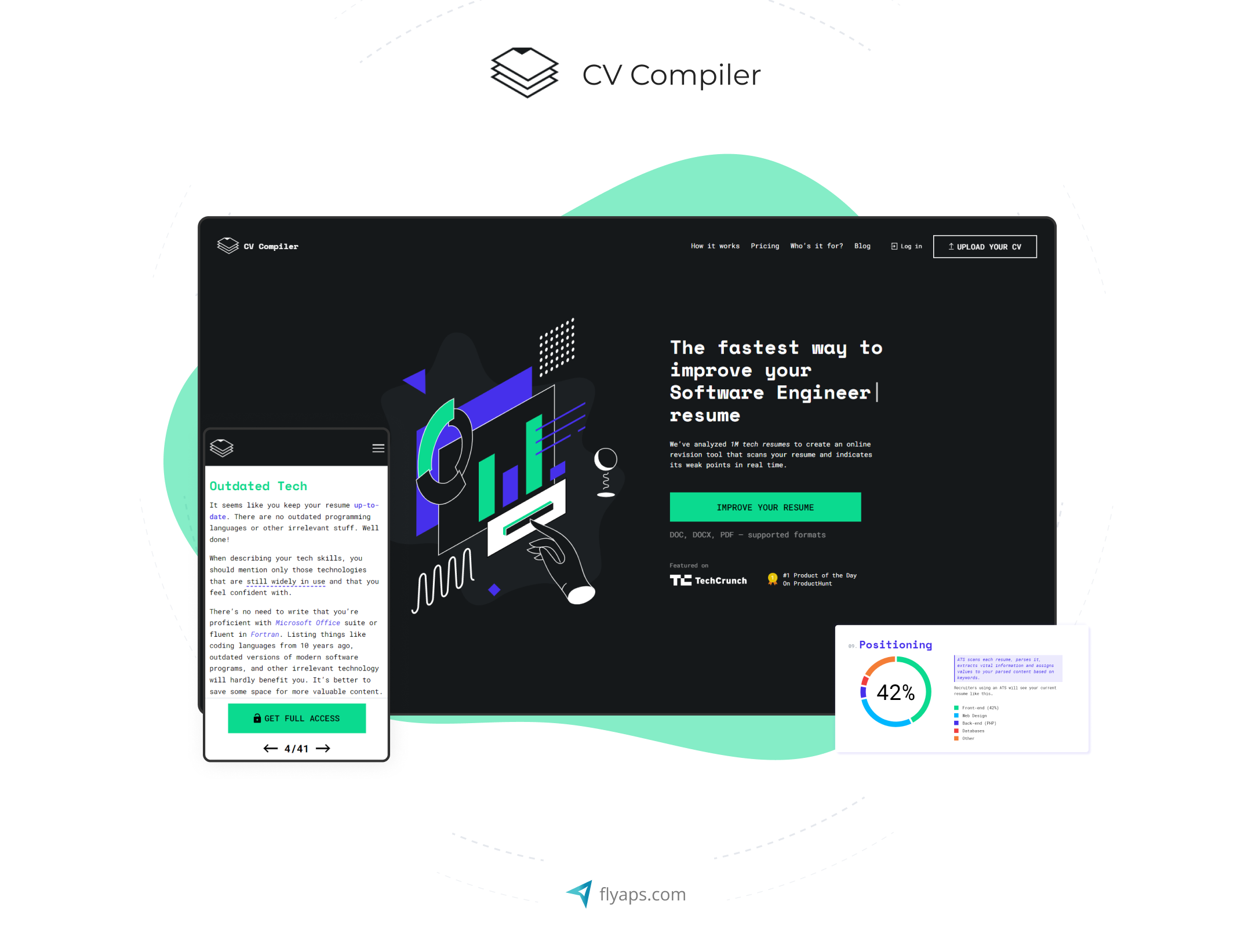
Problem definition
The Relocate.me team noticed many candidates were being rejected due to poorly written resumes. They wanted to create a tool to improve tech resumes, making them more appealing to recruiters. Artificial intelligence was ideal for this, as it can quickly analyze large volumes of text, spot patterns and issues, and provide recommendations. This is faster and more efficient than having humans review and suggest improvements for each resume.
Data acquisition and preparation
After discussing the project goals and objectives, we needed to collect some data, in this case – a lot of resumes. We used CVs from Relocate.me, as well as from other sources, especially in PDF format. Our team also added a built-in glossary of IT terms to help the future system understand and sort the info in these resumes.
Model development and training
Next, we used natural language processing (NLP) and created a custom ML model. This model was trained to spot key parts of a resume, like the summary, work experience, and tech skills, and give personalized tips for improvement.
Model evaluation and refinement
During the project, we regularly checked the model's performance. The team used various techniques to ensure accurate text extraction and relevant suggestions. We also conducted extensive testing and made improvements based on the results.
Deployment
Next, Flyaps launched the system as a cloud-based app. This setup allowed different parts of the system to work independently, making it easier to update and scale. The backend handled the complex text parsing, while another company took care of the user-friendly frontend.
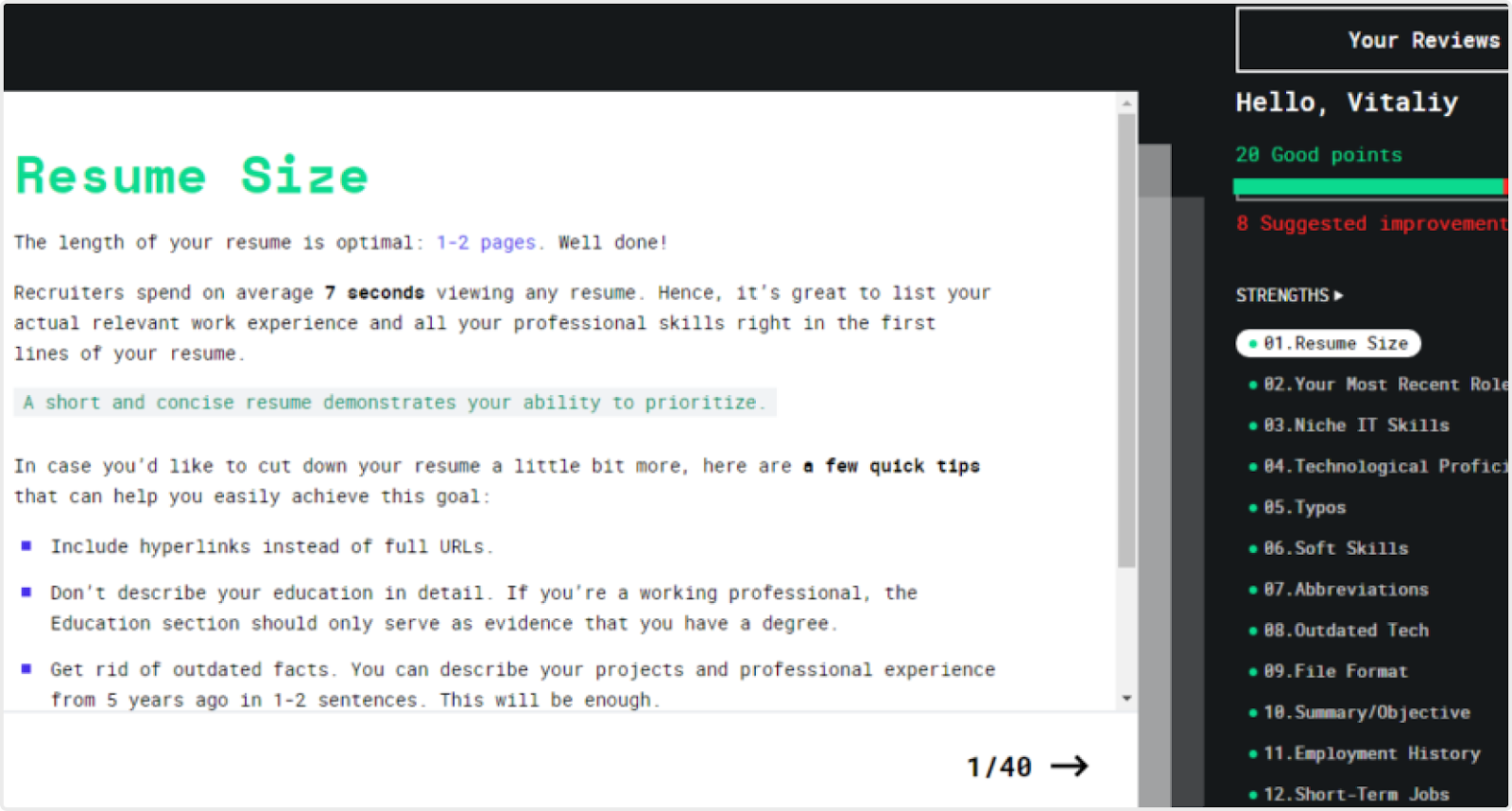
Machine learning operations (MLOps)
To keep the machine learning models running smoothly, we implemented MLOps practices. This involved automating model training and deployment, ensuring quick adaptation to new data and user needs. We also created a low-code platform, letting users easily adjust and update the resume analysis features to suit different businesses.
As a result, CV Compiler can analyze and improve resumes in under a second. Companies like Indeed can integrate the solution to enhance their HR processes. This flexibility has made CV Compiler a popular tool in recruitment, with over 50,000 IT professionals using it.
Final thought
Knowing the basics of the artificial intelligence life cycle isn’t enough for success. Artificial intelligence projects, especially generative ones, require complex algorithms, careful evaluation, and human judgment. Managing these projects involves difficult choices, so experience in artificial intelligence project management is essential.
If you need help navigating an artificial intelligence project, Flyaps is here to assist. Contact us today to learn more.

AI can do more for your business—let’s find the best way to make it work for you. Check out our expertise and let’s discuss your next AI project.
See out AI servicesFrequently asked questions
What is an AI life cycle?
The artificial intelligence life cycle is a step-by-step process for creating and managing artificial intelligence systems. It includes tasks like gathering data, building models, deploying solutions, and keeping them updated to ensure effectiveness.
What is AI lifecycle automation?
Artificial intelligence lifecycle automation streamlines the development process by using tools to handle repetitive tasks, such as cleaning data, training models, or monitoring performance. This speeds up the process and allows teams to focus on bigger challenges.
How does the AI life cycle differ from the software development life cycle (SDLC)?
Unlike the software development life cycle, which focuses on writing and maintaining code, the artificial intelligence life cycle centers around data and continuous learning. Artificial intelligence systems require ongoing updates to handle real-world changes, while the software development life cycle follows a more structured, predictable path.




